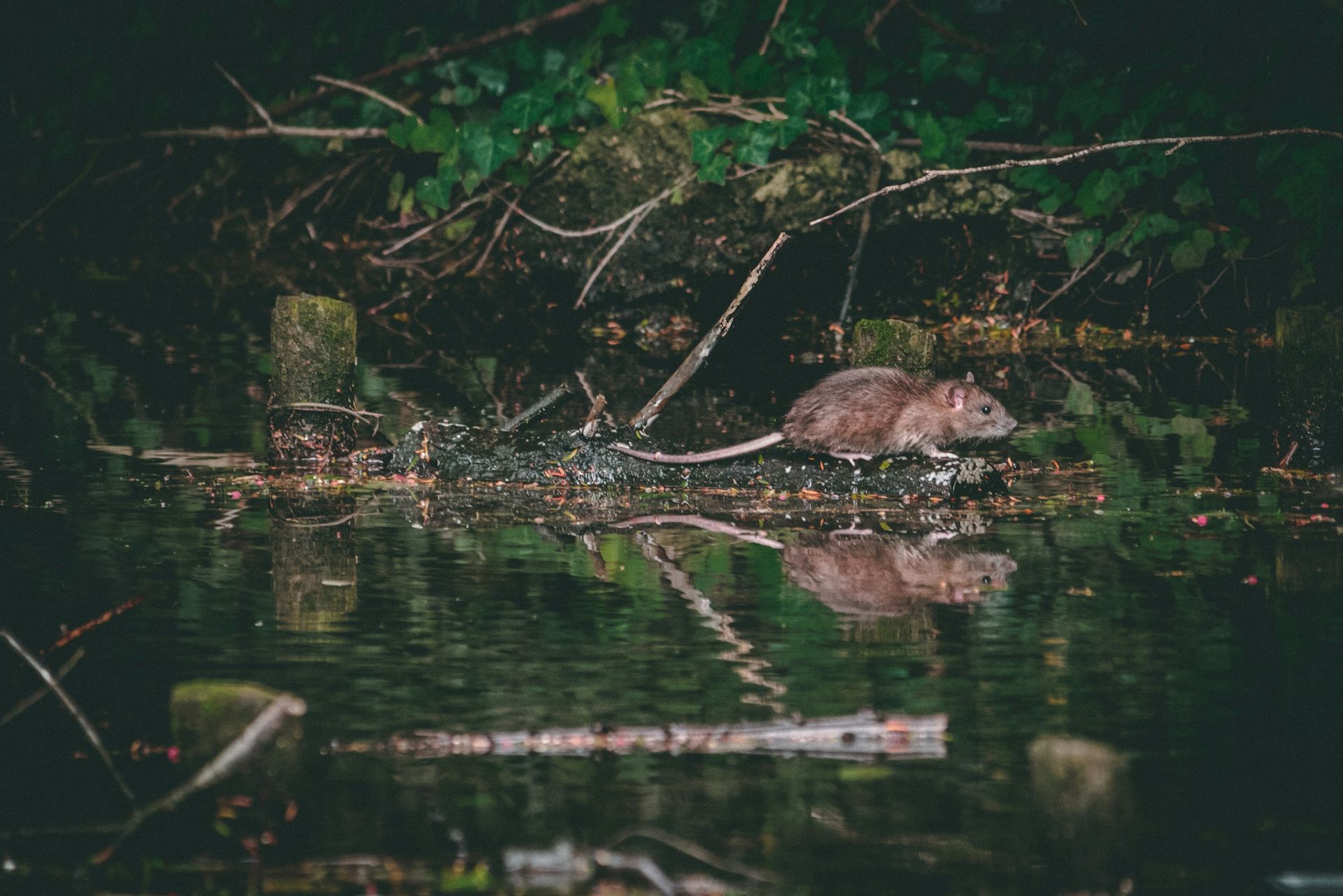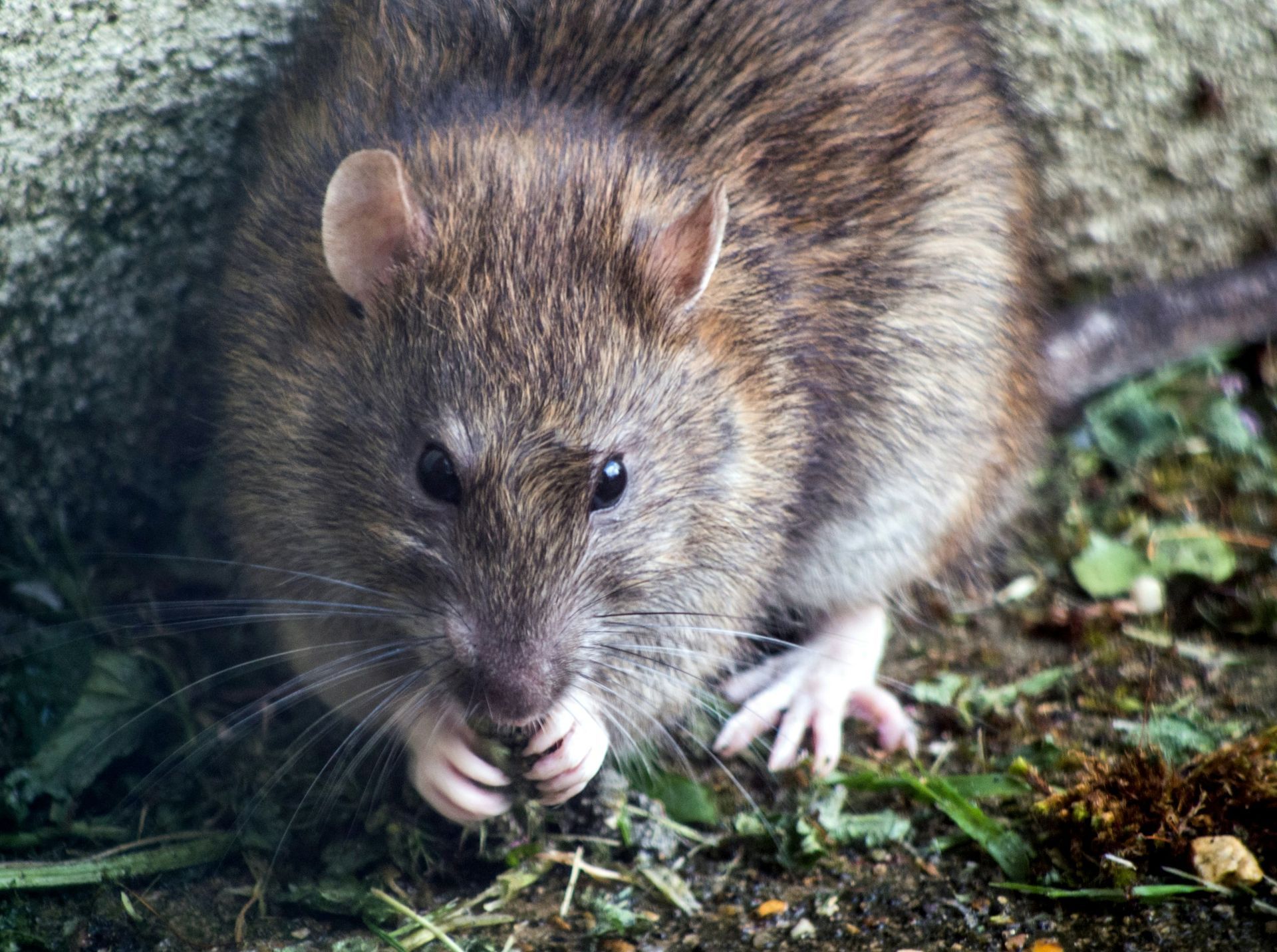Rats are highly adaptable rodents known for their intelligence, strong survival instincts, and rapid reproduction. Found in nearly every habitat worldwide, from urban environments to forests and farmlands, rats play an important role in ecosystems by dispersing seeds and serving as a food source for predators.
Rats typically measure 8-12 inches in length, including their tails, and weigh between 5-12 ounces. Their fur is usually brown or gray, depending on the species. Common species include the Norway Rat and the Black Rat. Rats are omnivorous, feeding on a wide range of foods, including seeds, fruits, insects, and human food scraps.
Rats are nocturnal and highly social, living in colonies with complex hierarchies. They are known for their strong problem-solving abilities and adaptability to human environments. Female rats can give birth to up to 12 litters per year, each consisting of 6-12 pups, making them highly prolific breeders.
Natural predators of rats include owls, hawks, snakes, and foxes. Human-related threats such as habitat disturbance, poisoning, and vehicle collisions also affect rat populations. Despite being considered pests in some settings, rats play a crucial role in maintaining ecological balance.

For your safety and the well-being of wildlife, please observe animals from a distance and avoid touching or disturbing them. If you encounter an animal that appears injured or in distress, contact a licensed wildlife rescue organization for guidance before intervening.
Found An Animal? Not sure how to help a wild animal in need? Learn when to step in, who to call, and how to help safely.
Did You Know?
- Rats have excellent memories and can remember routes through complex mazes.
- They can squeeze through holes as small as a quarter of an inch.
- Some rats are strong swimmers and can tread water for up to three days and hold their breathe for up to 3 minutes.
- Rats’ teeth grow continuously and are kept in check by constant gnawing.
- Rats can detect changes in temperature as small as one degree Fahrenheit.
- Some rats have been trained to detect landmines and diseases in humans.
- Their whiskers are highly sensitive and help them navigate in the dark.
- Rats communicate using ultrasonic vocalizations that are inaudible to humans.
- Rats can laugh; they make a high-pitched noise when they play.
- Rats are social creatures that live in communities in which they groom each other, sleep together, and even play.
- Rats expand and contract the blood vessels in their tails to regulate their body temperature.
- The Dusky-Footed Woodrat, native to California is also known as the pack rat. Woodrats build extensive nests that can be two to eight feet tall!
Problems Faced In The Wild
- Habitat Loss: Urban expansion reduces available shelter and food sources.
- Predation: Rats are preyed upon by a variety of predators, including birds of prey and carnivorous mammals.
- Poisoning: Rodenticides can harm rat populations and cause secondary poisoning in predators.
- Vehicle Collisions: Rats are vulnerable to traffic while foraging in urban areas.
- Climate Change: Altered weather patterns impact food availability and shelter.
- Human-Wildlife Conflict: Rats are often targeted as pests in human environments.
Tips For Cohabitation
- Seal Entry Points: Prevent rats from entering buildings by sealing cracks and gaps.
- Use Humane Traps: Opt for live traps instead of poison, snap traps, and glue traps to protect other wildlife.
- Store Food Securely: Keep human and pet food in sealed containers.
- Maintain Clean Yards: Reduce potential nesting sites by clearing debris and trimming vegetation.
- Preserve Natural Predators: Support healthy ecosystems that include rat predators like owls.
- Educate Others: Share the ecological importance of rats as seed dispersers and prey for predators.



